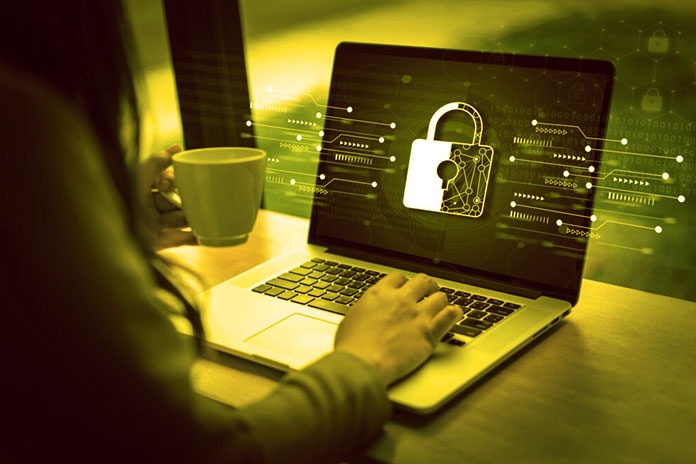This year’s theme, “See Yourself in Cyber,” highlights that everyone is responsible for online safety because cybersecurity is ultimately about people. And there has never been a more urgent need to strengthen your security due to the alarming increase in cybercrime, especially ransomware. Not only has the FBI reported a 60% increase in ransomware attacks over the previous year, but many organizations need to prepare to defend themselves.
According to Forbes, half of US companies still need to have a cybersecurity risk plan in place, and keeping up with the growing number of threats expected in the coming years will be a significant challenge. A 2022 Dataprot article cites that ransomware attacks businesses every 40 seconds, mainly due to phishing emails, behind two-thirds of these attacks. Ransomware is only one sort of malware among numerous that can think twice about activities and business congruence.
Yet, ransomware is especially risky because it forestalls admittance to a PC framework or fundamental information until a payoff is paid. Everything necessary is one off-base snap on a phishing connection or connection to freeze reports and disturb inside and outer administrations. It frequently spreads through phishing messages or by unconsciously visiting a tainted site. One way or another, it is decimating for the two people and associations. This is the way ransomware works:
- Infection: There are multiple ways aggressors can enter PCs. One of the most widely recognized is tapping on a malignant connection or downloading a contaminated link through phishing messages, which can frequently seem genuine and safe. Aggressors utilize login accreditations to send off malware using distant work area innovation, allowing them to remotely deal with somebody’s PC.
- Encryption: Ransomware encrypts data not to compromise system stability, but some variants can spread to other computers on the network. Worse, the malware can even seek out data backups to destroy them.
- Demand: Typically, a computer user receives a ransom note that explains what happened and includes instructions on how to pay the ransom and the consequences of failing to pay by a specific deadline. Sometimes, attackers offer to decrypt a file for free to prove that the decryption keys work.
- Double extortion: As if losing access wasn’t enough, advanced ransomware thieves double their leverage by extracting confidential data before encrypting it and threatening to make it public or sell it if the victim refuses to pay. This double-extortion process pushes organizations to pay.
- To pay or not to pay: If victims do not pay, they risk losing their data forever and, in the case of double extortion, having their data exposed. But if they pay, there is no guarantee that the attackers will provide encryption keys. In the case of double extortion, the victims cannot prevent the attackers from selling or leaking the data.
This means that a ransomware attack is always a lose-lose situation. How can you help protect your organization and your employees, as well as those who work with you, such as suppliers, not to mention your customers? For starters, and per recommendations from CISA and NCA, it’s critical to focus on the “people” part of cybersecurity, making sure everyone in your organization does these four things:
- Enable multi-factor authentication
- Use strong passwords
- Identify and report phishing activities
- Update the software
This is important if your organization uses a hybrid model with remote workers. According to data platform company Splunk, 78% of security and IT leaders say remote workers are more complex to protect, and 68% have reported increased attacks during the pandemic. With more and more devices (including mobile) in use from various locations, the potential entry points and opportunities for hackers to compromise your business have skyrocketed, allowing access to steal data or interrupt your activities.
The good news is that you don’t have to go it alone when protecting your organization from cyber threats. At Konica Minolta, our All Covered IT Services division offers anti-malware protection solutions that prevent attacks from succeeding and help you stay in business-as-usual mode to avoid downtime and interruptions. To stay in business-as-usual mode to avoid downtime and interruptions. Our anti-malware services provide:
- Centralized security: We manage all aspects of cyber threat protection to streamline the process.
- Custom Solutions: We design a protection plan to meet your needs.
- Continuous Monitoring: Our software monitors your devices and systems 24/7.
- Rapid Response: Our software addresses and removes threats as soon as they are detected.
One of the most critical aspects of cybersecurity, entirely in line with this year’s theme, “See Yourself in Cyber,” is ensuring that everyone in the organization knows the threats and what to look for to avoid potential security breaches. Safety. Being careful when clicking is the number one rule for anyone online, and it is your organization’s first level of defense. That’s why we also offer managed security awareness training, which educates, trains, and phishes your users so they can develop more sophisticated cybersecurity skills.
Also Read: Empowerment Of Minds Through Cyber Security Education At Trendzguruji.me Cyber

